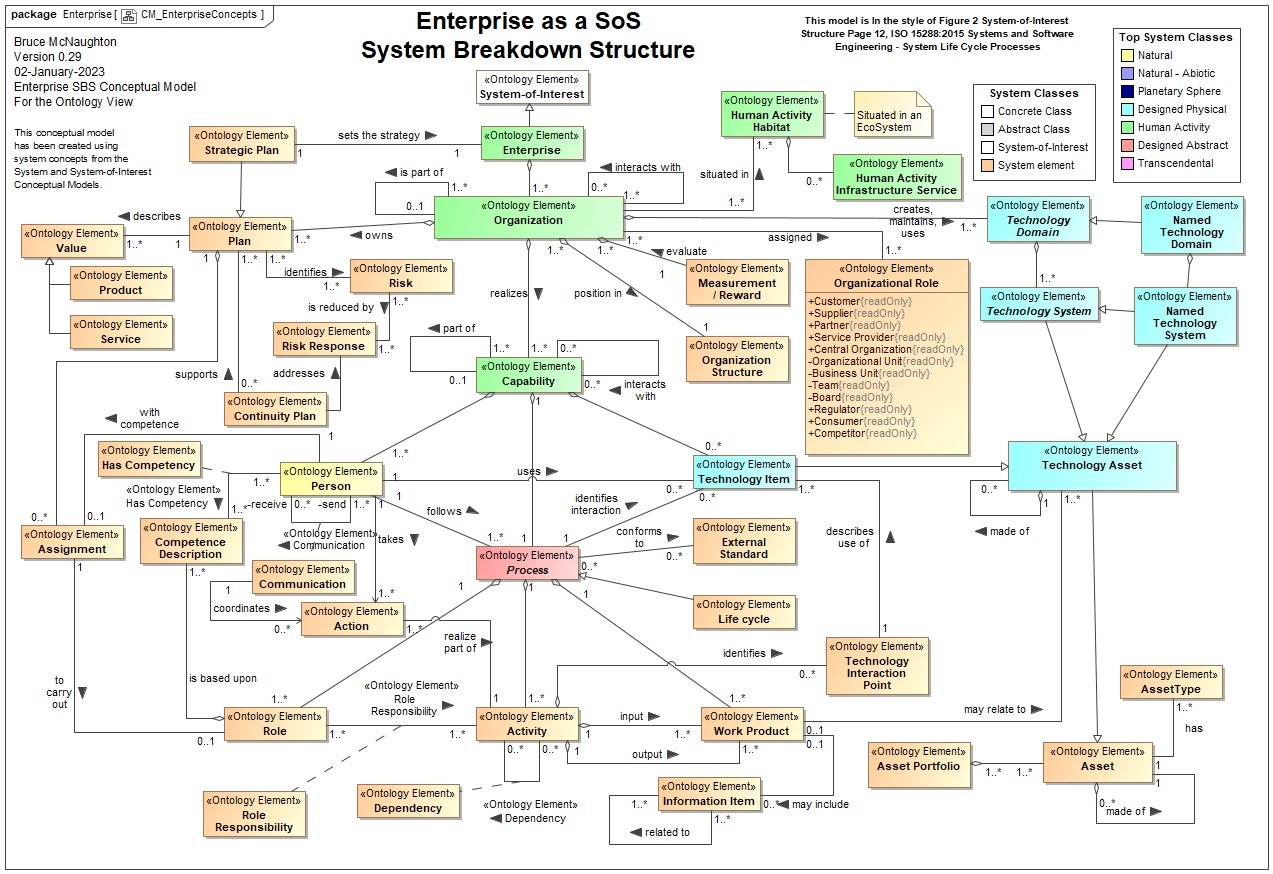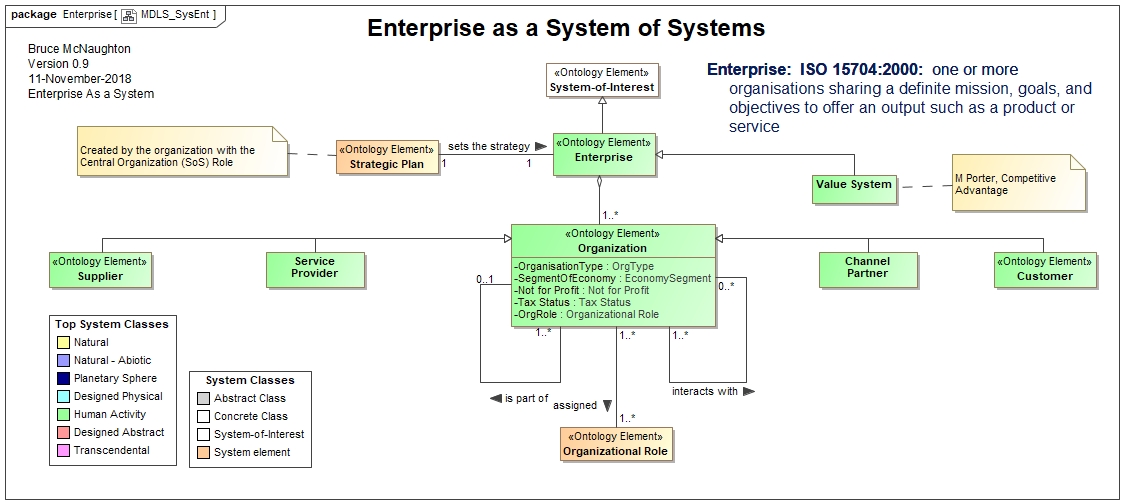View: System Structure (Pattern of Organization)
The system structure or pattern of organization represents a logical model of the systems for the system-of-interest. This logical model is independent of any specific physical realization of any of the systems. This logical model may also be called a conceptual model of the system-of-interest.
System Element: Identification and Relationships
Better to show the overview and then provide supporting detail for each level. This is for the whole enterprise.
The enterprise structure is shown in the following picture:

This section explores the structure of the following systems:
- Enterprise
- Organization
- Capability
- Technology System
The context of the above systems is shown on the Enterprise Conceptual Model.
The enterprise structure is shown in the following picture:

The Enterprise is realized through a network of organizations. The following may be types of organizations found within an Enterprise as a System of Systems (SoS).
- Customer Organizations
- Supplier Organizations (all organizations across any of the supply chains)
- Partner Organizations (Service or Sales)
- One or more organizations forming the core of the enterprise (e.g. central organization supported by other internal organizations)
- Organizations may also interact with government or non-government organizations.
Each organization that contributes to the enterprise takes on a role. The roles that the organizations can take on are:
- Suppliers
- Customers
- Types of partners (sales or Service)
- Regulators, etc.
The Compass Project has identified a number of architectural patterns for a System of Systems. The Centralized Architecture Pattern with a central constituent system as a hub is a typical candidate for the Enterprise as a System of Systems (SoS). See the document: "D22.3 – Report on Modelling Patterns for SoS Architectures (Public)" for other architecture patterns.
The Enterprise as a system of systems can also be shown in this simple model.
The types of relationships between the various organizations are the following:
- Contractual
- Customers,
- Suppliers,
- Sales Partners,
- Delivery Partners (products and services)
- By regulatory requirements / law
- Partnerships and associations
These organizations can then be considered system elements or parts within an Enterprise as a System of Systems (SoS).and at the same time a constituent system as an Organization.
The roles that the organizations take on define their relationships to each other.